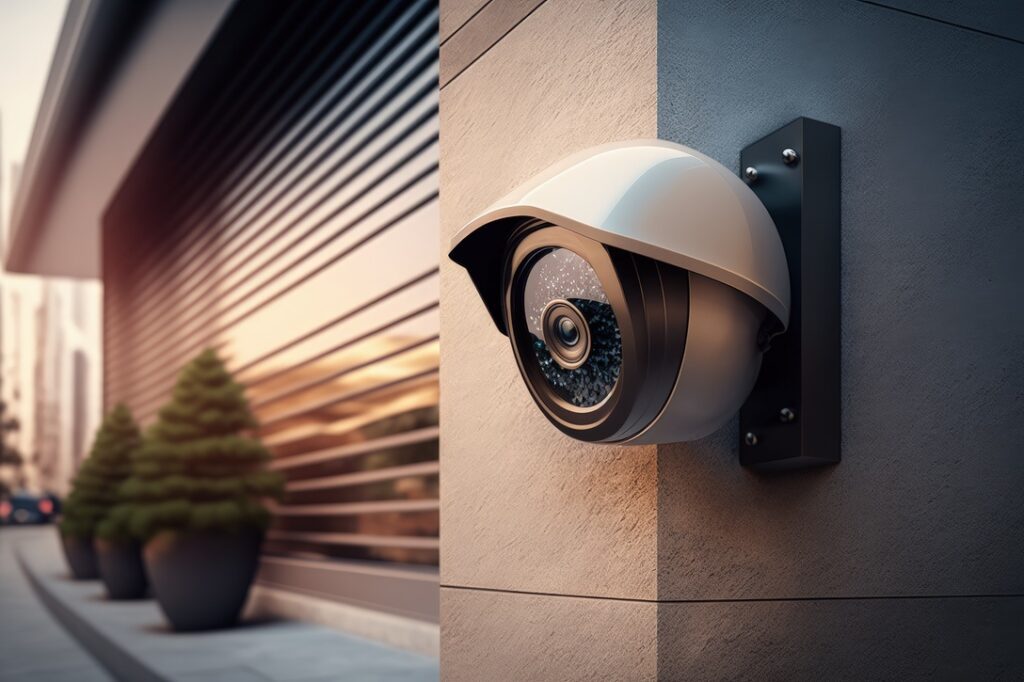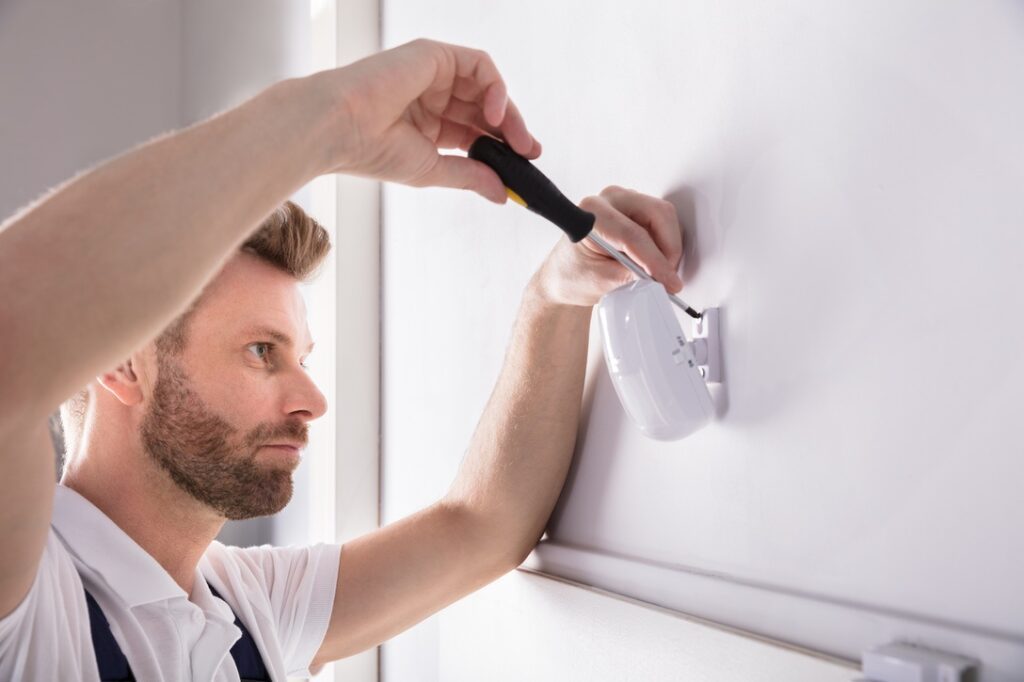Motion sensors can make your home more secure by activating cameras or alarms when intruders trip them, and can also provide you with energy savings by controlling lights or climate control systems so that they run on your family’s schedule. But the benefits you get from your motion sensors will depend on which ones you buy, how you power them, and how and where they’re installed.
As leading providers of home electrical services in Calgary, the 4-Star Electric team is here to show you what to consider before buying motion detectors. Read on to learn about important features, placement tips, and more.

#1: Buy the Right Type of Sensors
Not all motion sensors use the same technology to detect movement. The most common types of sensors are:
- Passive infrared: the most common type of motion detectors in home security systems. These detectors look for temperature changes to identify body heat.
- LED infrared or area reflective: sensors that reflect infrared rays off objects within their range to measure their distance from the sensor and register movement when that distance changes.
- Microwave: these sensors use the same concept as area reflective sensors but bounce microwave pulses off objects in a given area instead.
- Ultrasonic: sensors that bounce high-frequency sound waves off objects in a given area to determine whether they are moving (like in animals that use sonar).
- Vibration: sensors that use a small mass to activate a switch when vibrations are caused by people or animals moving through nearby space.
Some sensors combine more than one of the above methods to provide a failsafe or backup. Typically, passive infrared sensors tend to be popular because they offer good value and reliability. Microwave sensors are also a common choice, but are more expensive up front.
#2: Buy Sensors with Enough Range
Motion sensors are available in a wide variety of ranges. Some can detect movement from up to 50 feet away, but most are designed to work within the 10-30 foot range.
Consider where you intend to place the sensors before purchasing them. For example, a motion sensor with a 10-foot range may serve you well if placed near a narrow opening like a kitchen or bathroom window, but you’ll likely want a sensor with a range closer to 50 feet if you’re using it to turn on the lights in the entire garage anytime someone enters.

#3: Hardwired vs. Battery Sensors
Some sensors are battery powered, while others must be hardwired into your home’s electrical system. Each type has its own pros and cons, but we recommend hardwired sensors because they require less maintenance and offer better reliability once installed.
It’s easy to forget to change the batteries in motion sensors that use them—especially if you have lots of them. This can lead to security vulnerabilities or convenience issues in your home. Conversely, once our team has installed hardwired sensors in your home, they’ll be as reliable as your lights, thermostat, or anything else connected directly to your electrical panel.

#4: Motion Sensors Aren’t Just for Security
While motion detectors are frequently linked to cameras or alarm systems, you can do more with them than simply deter trespassers. You can also connect motion detectors to your lights, thermostat, and other utilities so that they automatically power down when you leave the house and activate when you return home.

#5: Place the Sensors Properly
Motion sensors won’t do much good if they aren’t aimed at the areas where people are most likely to walk or move, so study your new motion sensors carefully and experiment with putting them in a few different spots to get optimal coverage.
Avoid placing your sensors in narrow areas (unless you’re trying to monitor specific openings or passages for security purposes), and ensure that their range is not blocked by objects. Take the angle of your sensors into account as well—a sensor placed in the right area can still be of limited use if it’s facing the wrong way and leaving a blind spot.
#6: Sensor Sensitivity
Most sensors can be adjusted so that they only trigger the devices they’re connected to when enough movement occurs. Since you don’t want a leaf blown by the wind or a stray cat in your backyard to trigger your burglar alarm, make sure to set your sensors before placing them and turning them on.
#7: Consider Tamper-Proof Sensors
If you are using motion sensors for security purposes, make sure they are installed in a location where they are not easily accessible to intruders. You should also consider using sensors with tamper-proof features to prevent them from being disabled.
Some examples of tamper-proof features in modern motion sensors include anti-masking, which detects when a person has deliberately covered the sensor, and encryptions to prevent information transmitted by the sensor from being intercepted. Many high-quality security sensors also use tamper-proof housing to make damaging them more difficult.
#8: Test Your Sensors After Installing Them
Once you’ve purchased, powered, set, and placed your motion sensors, it’s time to test them and make sure they work properly, start by walking around the area where you’ve set your sensors up, and check to see if the desired response is triggered (turning on lights or activating an alarm). Then adjust your sensitivity and placement as needed.
To save effort and make sure your motion sensors are installed properly the first time, contact 4-Star Electric. Our professional electricians can provide you with high-quality motion sensors that meet your needs and hardwire them into your home’s electrical system to ensure they function safely and effectively.


